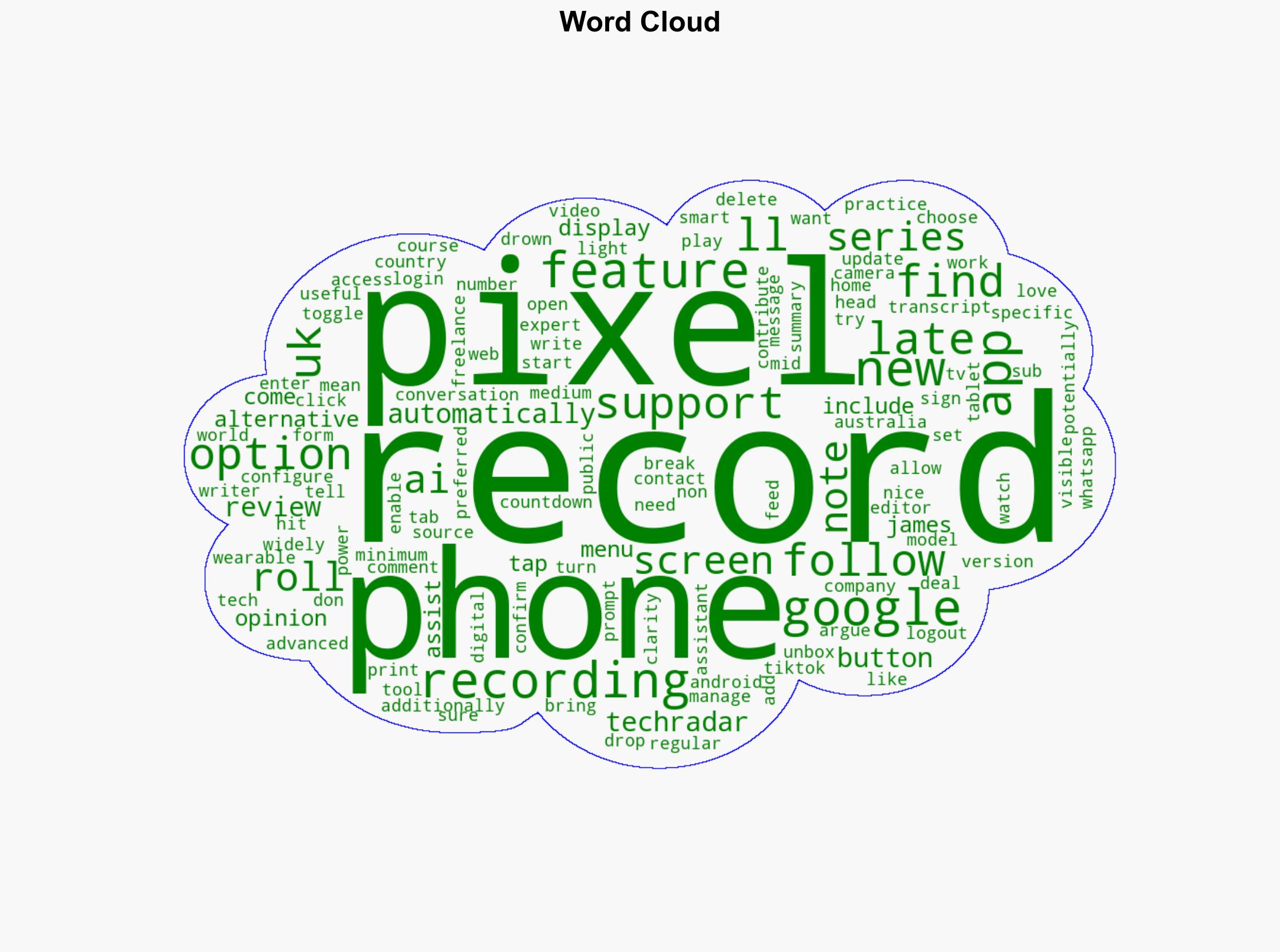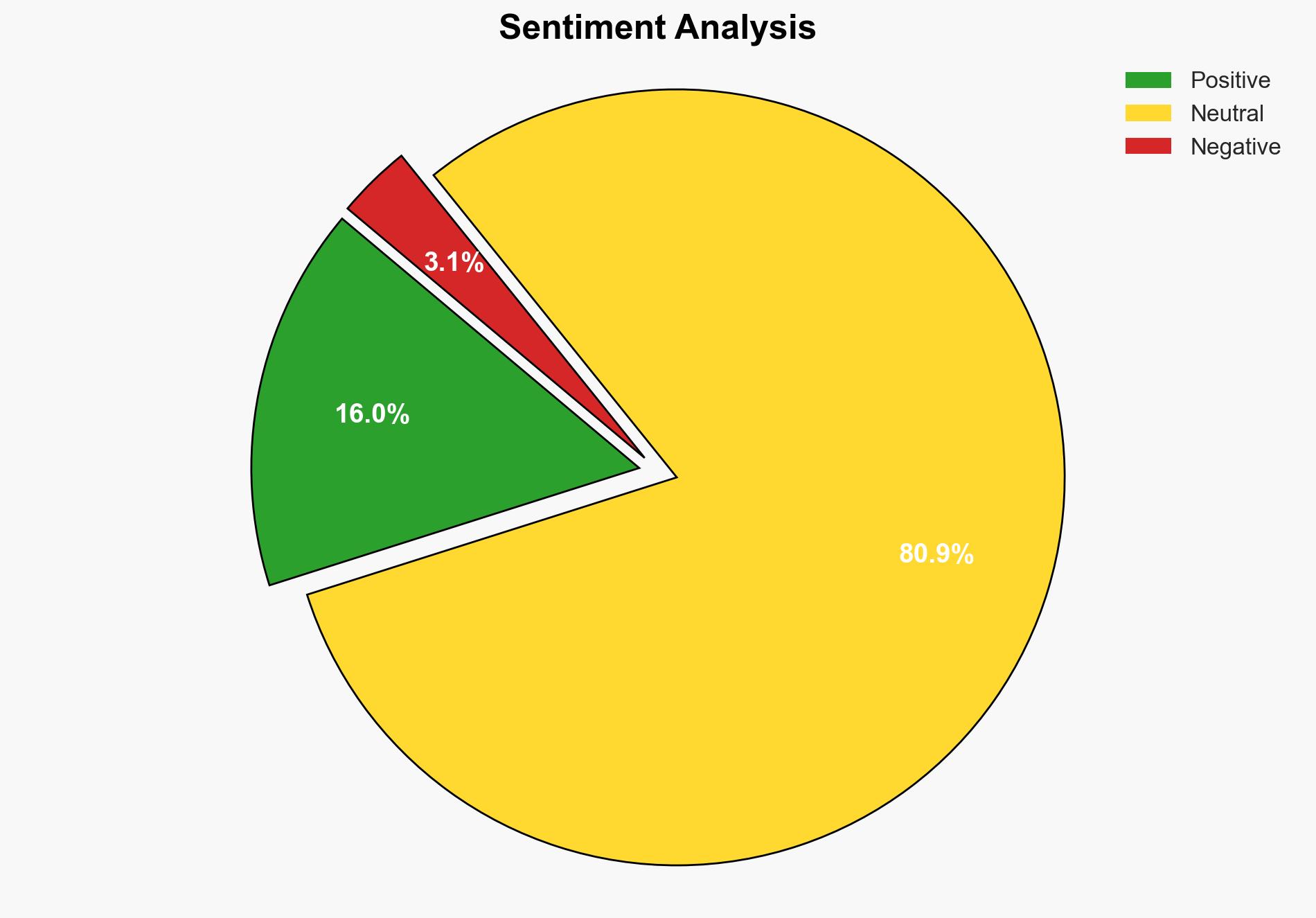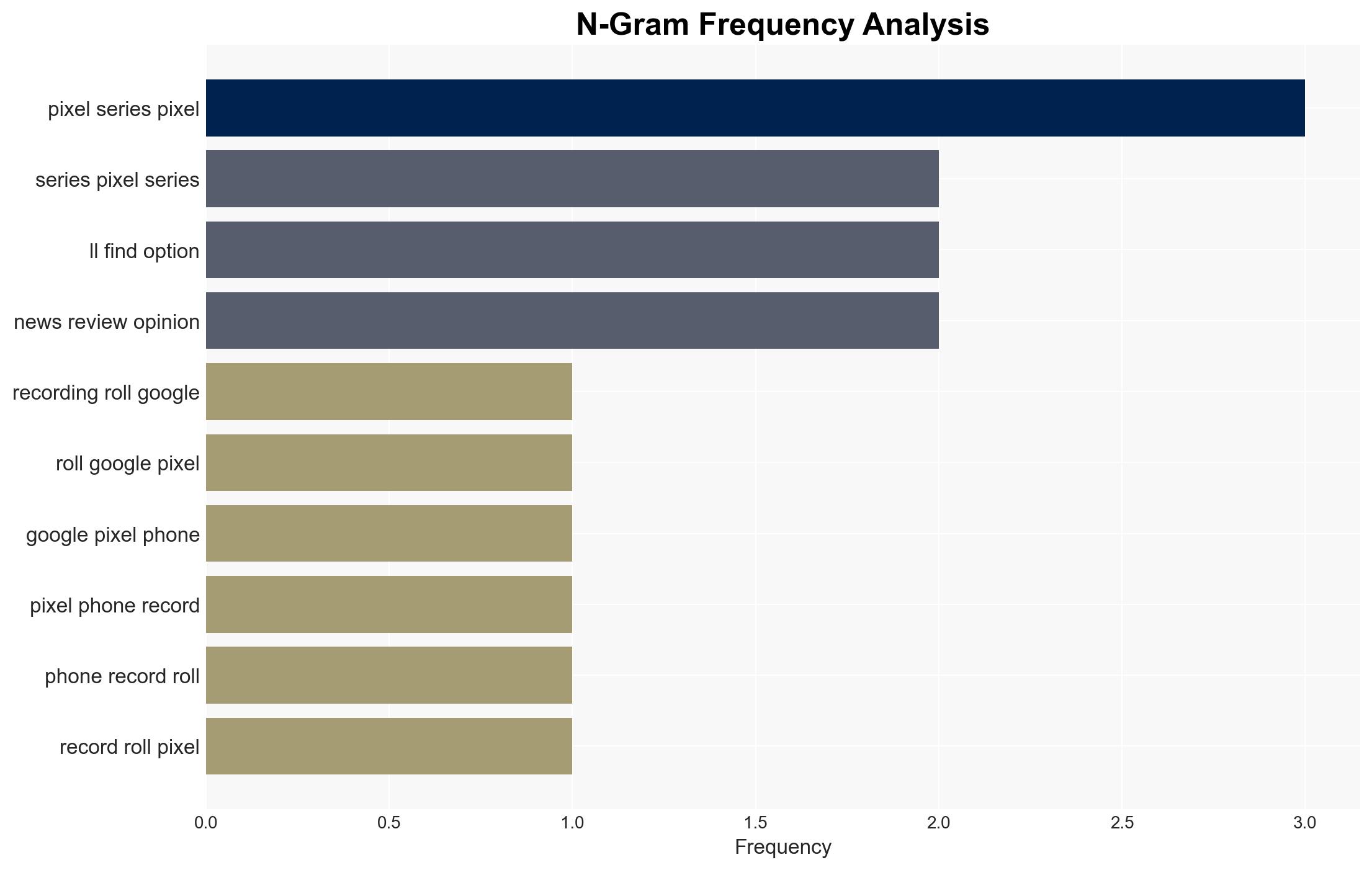Call Recording is rolling out to some Google Pixel phones now heres how to use it – TechRadar
Published on: 2025-11-14
AI-powered OSINT brief from verified open sources. Automated NLP signal extraction with human verification. See our Methodology and Why WorldWideWatchers.
Intelligence Report: Call Recording is rolling out to some Google Pixel phones now heres how to use it – TechRadar
1. BLUF (Bottom Line Up Front)
The rollout of call recording features on Google Pixel phones represents a strategic move by Google to enhance user experience and compete with alternative smartphone brands. The most supported hypothesis is that this feature aims to leverage AI capabilities to differentiate Google Pixel in the competitive smartphone market. Confidence in this assessment is moderate due to potential regulatory and privacy challenges. Recommended actions include monitoring regulatory responses and assessing user feedback to optimize feature deployment.
2. Competing Hypotheses
Hypothesis 1: Google is introducing call recording on Pixel phones primarily to enhance user experience and differentiate its product in a competitive market.
Hypothesis 2: The rollout of call recording is a strategic test by Google to gauge user interest and regulatory tolerance before a broader implementation across its ecosystem.
Hypothesis 1 is more likely given the emphasis on AI-powered features and the competitive nature of the smartphone market. Hypothesis 2 remains plausible but less supported due to the lack of explicit testing indicators in the rollout.
3. Key Assumptions and Red Flags
Assumptions: It is assumed that Google has conducted sufficient market research to justify the feature’s introduction. It is also assumed that Google has considered potential privacy concerns and regulatory compliance.
Red Flags: Potential regulatory pushback due to privacy concerns could impede the feature’s success. The absence of clear communication from Google regarding data handling and privacy safeguards is a concern.
4. Implications and Strategic Risks
The introduction of call recording features could lead to increased scrutiny from privacy advocates and regulatory bodies, potentially resulting in legal challenges or fines. This could also trigger a competitive response from other smartphone manufacturers, leading to a rapid escalation in feature offerings that prioritize AI and privacy.
5. Recommendations and Outlook
- Monitor regulatory developments closely to anticipate potential compliance issues.
- Engage with privacy advocacy groups to address concerns proactively and enhance transparency.
- Best-case scenario: Successful adoption with minimal regulatory challenges, enhancing Google’s market position.
- Worst-case scenario: Significant regulatory backlash leading to feature rollback and reputational damage.
- Most-likely scenario: Gradual adoption with ongoing adjustments based on user feedback and regulatory guidance.
6. Key Individuals and Entities
James (TechRadar writer)
7. Thematic Tags
Cybersecurity, Privacy, Technology Innovation, Market Competition
Structured Analytic Techniques Applied
- Adversarial Threat Simulation: Model and simulate actions of cyber adversaries to anticipate vulnerabilities and improve resilience.
- Indicators Development: Detect and monitor behavioral or technical anomalies across systems for early threat detection.
- Bayesian Scenario Modeling: Quantify uncertainty and predict cyberattack pathways using probabilistic inference.
Explore more:
Cybersecurity Briefs ·
Daily Summary ·
Support us
·





